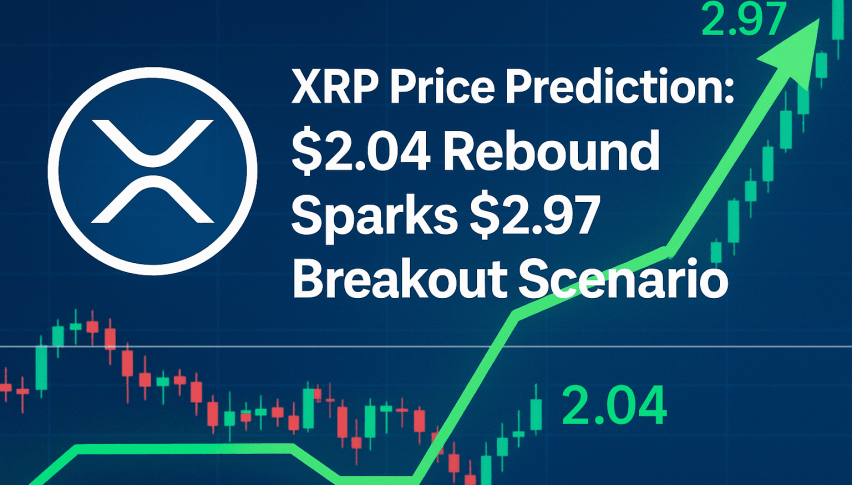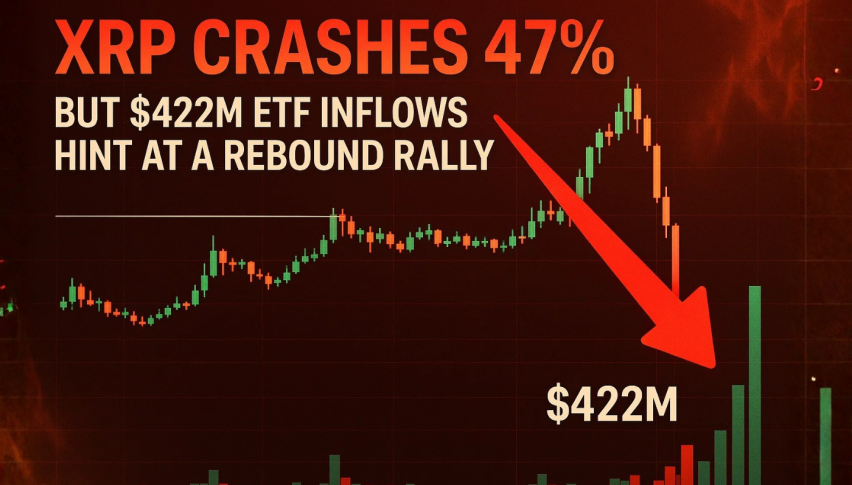XRP Trapped Under $3’s Grip: When Will Ripple’s Curse Break?
XRP has been forming "lower highs" on weekly charts since July, while Bitcoin continues to hit new all-time highs (currently around $150K)

Quick overview
- XRP has been forming lower highs since July, indicating weakening momentum compared to Bitcoin, which is reaching new all-time highs.
- A break below the $2.72-$2.80 range could lead to significant declines, targeting $2.33 or even $1.90.
- Current market conditions show negative funding rates and declining open interest, suggesting increased downside risk and bearish sentiment.
- Despite over 90% of holders being in profit, a drop to $1.19 could trigger widespread profit-taking amid diminishing liquidity.
Live XRP/USD Chart
XRP has been forming “lower highs” on weekly charts since July, while Bitcoin continues to hit new all-time highs (currently around $150K).

A break below $2.72-$2.80 could accelerate selling, targeting $2.33 (a 20% decline) or even $1.90 (a 35% drop from current levels).
This divergence signals weakening momentum and increasing downside risk. With negative funding rates and declining open interest (down 36% since May), analysts point to a descending triangle pattern that supports bearish bets.
Although over 90% of holders are currently in profit, a decline to $1.19 would align with average acquisition costs and could lead to widespread profit-taking. In September, a $1.3 million liquidation cascade within just four hours wiped out billions in value, driven by Bitcoin’s seasonal weakness and macroeconomic uncertainties.
Liquidity has diminished below current prices, with long positions being closed amid delays in ETF approvals.
XRP is trading within a descending triangle pattern, characterized by lower highs converging towards a flat support level near $2.75.
Technical weakness, combined with dominant sell-side cumulative volume delta (CVD) and softer on-chain and derivatives activity, increases the likelihood of retesting $2.75 soon.
The Spot Taker CVD indicates a “Taker Sell Dominant” situation, suggesting there is net selling pressure from aggressive traders. Short-term price recoveries have not been able to change the CVD trend, which means that sellers continue to control market momentum and hinder any sustained bullish rebounds.
Additionally, open interest (OI) has fallen by 6.51% to 2.78 billion, reflecting a decrease in derivatives participation and fewer new directional bets being placed.
A declining OI, combined with selling dominance, typically points to a continuation of the current trend rather than a reversal. However, lower leverage in the market could help reduce the likelihood of forced liquidations.
- Check out our free forex signals
- Follow the top economic events on FX Leaders economic calendar
- Trade better, discover more Forex Trading Strategies
- Open a FREE Trading Account



